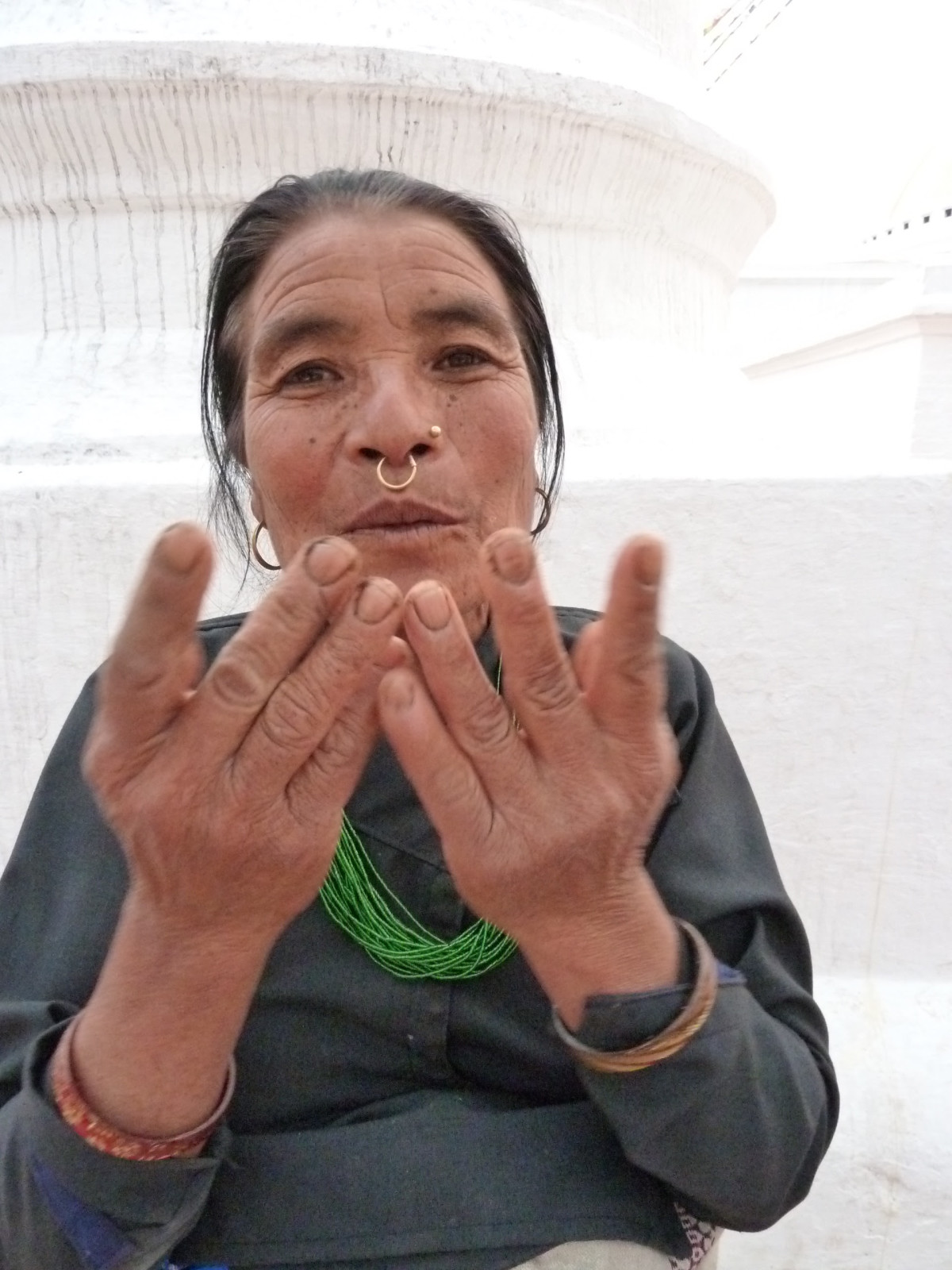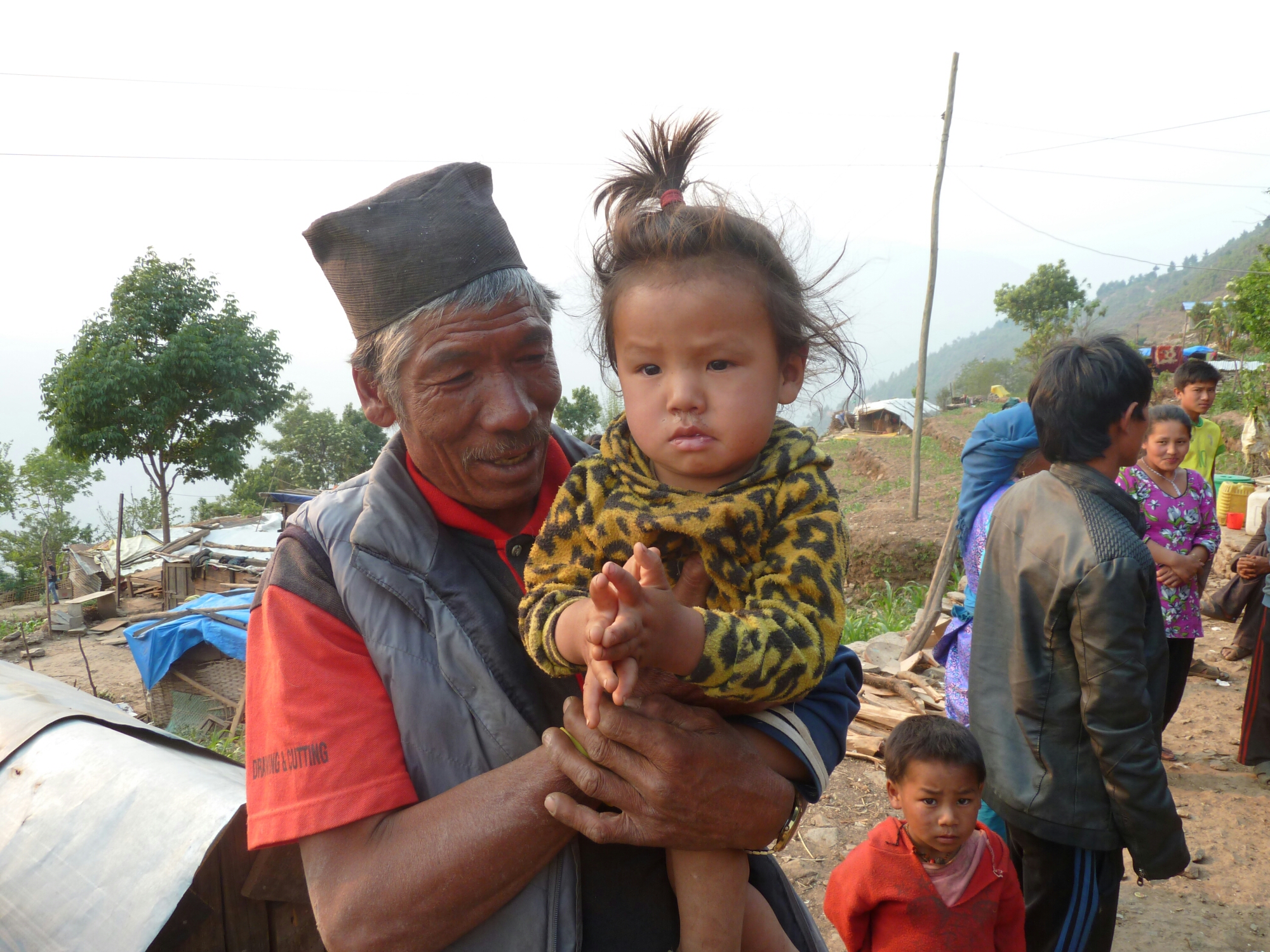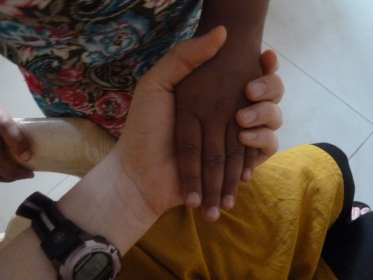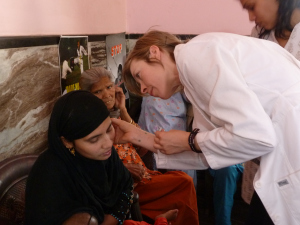Dearest IOEP Community,
I can’t believe it but it has been MONTHS since I’ve written. Partly it’s just been busy-ness. Life has this incredible way of filling up. Clients having babies, my own four-legged girls and their various needs, and just staying on the up and up with all of life! It can be SO MUCH! And yet Nepal has suffered a major and devastating Earthquake, two actually.
Partly I’ve just been waiting and watching to see what was happening in Nepal before sending you an update. There have been so many questions in my heart and mind about what is MOST needed and WHEN would be the best time to go?
As you know, Nepal sustained a rather devastating earthquake in April of this year, followed by a second, somewhat less devastating earthquake in May. While I had been working on plans to return to India to visit the girls from STOP India and host clinics in the slums, Nepal suddenly took priority.
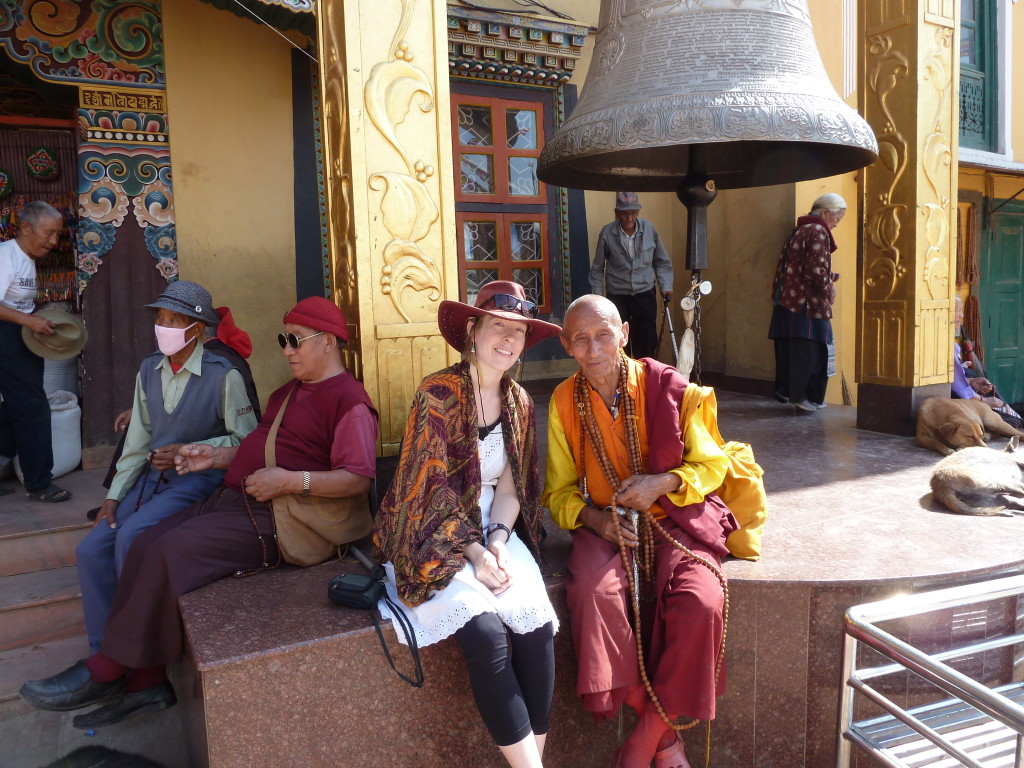
(This was taken right outside from the Pure Vision Sorig Healing Center where I donated many hours of treatment to anyone who needed it.)
My dear friend Thomas has lived in Nepal for 30+ years and was visiting Colorado Springs a few weeks ago. I drove down there to check in and get the scoop on what’s happening so that I could get clearer about my upcoming trip (it’s not like I can rely on our news sources these days.…)
There are a few important things to know about what’s going on there:
1. Nepal is in a FUEL CRISIS. There is a severe shortage of gasoline coming in from India. Where there were 300 truckers driving in each day now there are only 8-10. People are abandoning their cars on the streets or waiting for days in gas station lines. Many service workers have been stranded for days in random places because of this. As a result of the fuel shortage many people are crowding the few buses that are running. But the crowds are too large for the buses, and even as I write at this moment, another bus too top heavy from so many passengers on the roof, toppled down a mountainside killing 30 people (yes, that was today, Tuesday). These things are happening quite often since the earthquake, sadly.
…
2. The fuel crisis has also brought a serious FOOD SHORTAGE . The blockades along the border of Nepal and India are hindering the transport of lentils and rice, a primary form of sustenance for Nepalis into the country. And since the earthquake, landslides have closed off all roads to China so India is the only place where Nepal can import these items since it is a landlocked country.
…
3. There has been a VIOLENT UPRISING of protestors in Nepal over the development of a new constitution. The protestors are mostly minority groups who fear the new constitution will marginalize them further. India blames the fuel crisis on the protestors who congregate at the border. If you want to read more about the political situation, here is an article that breaks it down well.
…
4. They are facing an EXTREME PROPANE SHORTAGE that began in June which is impacting everyone. Boiling water and cooking food are two very important things that need to be happening every single day. It keeps the bacteria down as well and people are less likely to get sick. Without propane, people are stuck cooking over fires (if that’s even possible for them) and drinking contaminated water. This is going to have dire consequences.
More than 3 million people are still homeless since the earthquake and yet scientists are predicting another EVEN BIGGER EARTHQUAKE than what happened in April. They have measured the seismic pressure under the earth’s crust and there is still a lot in there. No one knows when this may come but everyone is bracing.
…
5. We can NO LONGER SEND SUPPLIES over safely. There have been too many reports of medical supplies and outdoor gear being taken at customs, even with someone there to pick them up. People are desperate and are taking desperate measures to survive.
Ahhhhh, that’s a lot to take in. I hope you are still taking some nice, deep breaths along the way.
Thanks for taking the time to read through this update.
I am planning my trip to Nepal at the beginning of the year (or as late as March depending on fundraising and supplies). We have come to terms with the fact that there is no good time to be there, per se. Any time is good when it comes to really basic needs being met. I hope to go with an abundance of supplies. I plan to take one (or more!) other practitioner with me and to work with several Nepali organizations. We hope to bring in AT LEAST $20,000 with us along with many supplies, both medical and basic survival supplies.
We are likely going to visit the village of Chhulemu which was almost completely wiped out by the first earthquake. Many teams of volunteers are there now helping to rebuild the schools, clinics, and homes of these very grateful people that rely on food and their living off of the land. A couple days trek to get up there, we plan to follow up with medical care after the bulk of the rebuilding takes place.
Also, we plan to host many free clinics all over the Kathmandu valley. Trauma has impacted nearly everyone and so we know this will be our primary focus. Additionally, respiratory infections are rampant as well as digestive issues, worms, and parasites. We know what we will be facing and plan to come fully prepared.
So far, we have raised nearly $8,000 with a long way to go. If you are interested in supporting this project, please consider making a donation of either money, supplies, or your precious time. A list is below of the most basic needed supplies and if you’ve got time, send me an email and I will keep you posted on what is needed. Mostly it will be help with research, planning, and gathering supplies.
You can DONATE, by clicking here!
Thank you again for caring about the people of Nepal. In all of my travels, these people have been some of the kindest, most generous, and most resilient people I have met. I can’t help but want to support them at a time like this.
Many blessings to all of you,
Mindi

The top 6 non-medical needed supplies:
Face masks (including N95 masks)
Tarps
Tents
Lightweight sleeping bags/blankets
Rain gear (adults and children)
Water filters (tablets, too)
P.S. If you would like to read more about what is happening, this is what the Department of State warned me with:
“The Department of State warns U.S. citizens of the risks of travel to Nepal following the 7.8 magnitude earthquake on April 25.While the frequency and severity of aftershocks have greatly diminished, the possibility of earthquakes or aftershocks continues. The overall effect of the initial earthquake and its aftershocks varied greatly across the country. Areas close to the epicenters suffered significant damage, while other areas in the country were nearly unaffected. This replaces the Travel Warning dated July 2, 2015.
The April 25 earthquake and its aftershocks destabilized steep, mountainous areas, and severe landslides have occurred in some affected areas. Monsoon rains, which began in June and largely ended in September, may have further destabilized these areas. Although trekking permits are being issued, not all trekking areas are safe for travel. Many roads close to trekking areas are blocked and impassable. We encourage travelers to consult carefully with their travel and trekking agencies for current, location-specific information and to heed warnings of potential danger. These conditions affect the possibility of emergency assistance if needed. We recommend providing family or friends with a detailed itinerary prior to trekking. Do not trek alone.
Sporadic demonstrations and civil unrest in the Terai region of Nepal may affect tourist travel to the southern region, including Chitwan National Park and Lumbini. Peaceful demonstrations can become violent. Curfews are in effect in some places.
Various commodities, including fuel, have become scarce because of a marked reduction of importation. The Government of Nepal has instituted measures to ration and reduce the use of motor vehicle fuel. There are long lines for fuel at gas stations in Kathmandu, Pokhara, and rural areas. This shortage could disrupt public transportation around Nepal. Food, along with the provision of normal goods and services, might also be affected.

